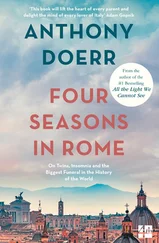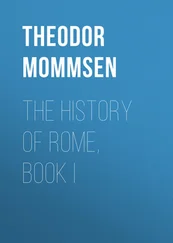Theodor Mommsen - The History of Rome. Book III
Здесь есть возможность читать онлайн «Theodor Mommsen - The History of Rome. Book III» весь текст электронной книги совершенно бесплатно (целиком полную версию без сокращений). В некоторых случаях можно слушать аудио, скачать через торрент в формате fb2 и присутствует краткое содержание. Жанр: История, Культурология, на английском языке. Описание произведения, (предисловие) а так же отзывы посетителей доступны на портале библиотеки ЛибКат.
- Название:The History of Rome. Book III
- Автор:
- Жанр:
- Год:неизвестен
- ISBN:нет данных
- Рейтинг книги:5 / 5. Голосов: 1
-
Избранное:Добавить в избранное
- Отзывы:
-
Ваша оценка:
- 100
- 1
- 2
- 3
- 4
- 5
The History of Rome. Book III: краткое содержание, описание и аннотация
Предлагаем к чтению аннотацию, описание, краткое содержание или предисловие (зависит от того, что написал сам автор книги «The History of Rome. Book III»). Если вы не нашли необходимую информацию о книге — напишите в комментариях, мы постараемся отыскать её.
The History of Rome. Book III — читать онлайн бесплатно полную книгу (весь текст) целиком
Ниже представлен текст книги, разбитый по страницам. Система сохранения места последней прочитанной страницы, позволяет с удобством читать онлайн бесплатно книгу «The History of Rome. Book III», без необходимости каждый раз заново искать на чём Вы остановились. Поставьте закладку, и сможете в любой момент перейти на страницу, на которой закончили чтение.
Интервал:
Закладка:
Other remarkable points in this document are the "brotherhood" of the Lampsacenes and the Romans, certainly going back to the Trojan legend, and the mediation, invoked by the former with success, of the allies and friends of Rome, the Massiliots, who were connected with the Lampsacenes through their common mother-city Phocaea.
2.The definite testimony of Hieronymus, who places the betrothal of the Syrian princess Cleopatra with Ptolemy Epiphanes in 556, taken in connection with the hints in Liv. xxxiii. 40 and Appian. Syr. 3, and with the actual accomplishment of the marriage in 561, puts it beyond a doubt that the interference of the Romans in the affairs of Egypt was in this case formally uncalled for.
3.For this we have the testimony of Polybius (xxviii. i), which the sequel of the history of Judaea completely confirms; Eusebius (p. 117, Mai ) is mistaken in making Philometor ruler of Syria. We certainly find that about 567 farmers of the Syrian taxes made their payments at Alexandria (Joseph, xii. 4, 7); but this doubtless took place without detriment to the rights of sovereignty, simply because the dowry of Cleopatra constituted a charge on those revenues; and from this very circumstance presumably arose the subsequent dispute.
4.II. VII. Submission of Lower Italy.
5.III. VII. The Romans Maintain a Standing Army in Spain.
6.III. VIII. The Celts of Asia Minor ff.
7.From the decree of Lampsacus mentioned at III. IX. Difficulties with Rome, it appears pretty certain that the Lampsacenes requested from the Massiliots not merely intercession at Rome, but also intercession with the Tolistoagii (so the Celts, elsewhere named Tolistobogi, are designated in this document and in the Pergamene inscription, C. J. Gr. 3536, - the oldest monuments which mention them). Accordingly the Lampsacenes were probably still about the time of the wax with Philip tributary to this canton (comp. Liv. xxxviii. 16).
8.The story that he went to Armenia and at the request of king Artaxias built the town of Artaxata on the Araxes (Strabo, xi. p. 528; Plutarch, Luc. 31), is certainly a fiction; but it is a striking circumstance that Hannibal should have become mixed up, almost like Alexander, with Oriental fables.
9.Africanus, Asiagenus, Hispallus.
CHAPTER X
The Third Macedonian War
1. Ide gar prasde panth alion ammi dedukein (i. 102).
2.II. VII. Last Struggles in Italy.
3.The legal dissolution of the Boeotian confederacy, however, took place not at this time, but only after the destruction of Corinth (Pausan. vii. 14, 4; xvi. 6).
4.The recently discovered decree of the senate of 9th Oct. 584, which regulates the legal relations of Thisbae (Ephemeris epigraphica, 1872, p. 278, fig.; Mitth. d. arch. Inst., in Athen, iv. 235, fig.), gives a clear insight into these relations.
5.The story, that the Romans, in order at once to keep the promise which had guaranteed his life and to take vengeance on him, put him to death by depriving him of sleep, is certainly a fable.
6.The statement of Cassiodorus, that the Macedonian mines were reopened in 596, receives its more exact interpretation by means of the coins. No gold coins of the four Macedonias are extant; either therefore the gold-mines remained closed, or the gold extracted was converted into bars. On the other hand there certainly exist silver coins of Macedonia prima (Amphipolis) in which district the silver-mines were situated. For the brief period, during which they must have been struck (596-608), the number of them is remarkably great, and proves either that the mines were very energetically worked, or that the old royal money was recoined in large quantity.
7.The statement that the Macedonian commonwealth was "relieved of seignorial imposts and taxes" by the Romans (Polyb. xxxvii. 4) does not necessarily require us to assume a subsequent remission of these taxes: it is sufficient, for the explanation of Polybius' words, to assume that the hitherto seignorial tax now became a public one. The continuance of the constitution granted to the province of Macedonia by Paullus down to at least the Augustan age (Liv. xlv. 32; Justin, xxxiii. 2), would, it is true, be compatible also with the remission of the taxes.
CHAPTER XI
The Government and the Governed
1.II. III. New Aristocracy.
2.II. III. New Opposition.
3.II. III. Military Tribunes with Consular Powers.
4.All these insignia probably belonged on their first emergence only to the nobility proper, i. e. to the agnate descendants of curule magistrates; although, after the manner of such decorations, all of them in course of time were extended to a wider circle. This can be distinctly proved in the case of the gold finger-ring, which in the fifth century was worn only by the nobility (Plin. H. N., xxxiii. i. 18), in the sixth by every senator and senator's son (Liv. xxvi. 36), in the seventh by every one of equestrian rank, under the empire by every one who was of free birth. So also with the silver trappings, which still, in the second Punic war, formed a badge of the nobility alone (Liv. xxvi. 37); and with the purple border of the boys' toga, which at first was granted only to the sons of curule magistrates, then to the sons of equites, afterwards to those of all free-born persons, lastly - yet as early as the time of the second Punic war - even to the sons of freedmen (Macrob. Sat. i. 6). The golden amulet-case ( bulla ) was a badge of the children of senators in the time of the second Punic war (Macrob. l. c.; Liv. xxvi. 36), in that of Cicero as the badge of the children of the equestrian order (Cic. Verr. i. 58, 152), whereas children of inferior rank wore the leathern amulet ( lorum ). The purple stripe ( clavus ) on the tunic was a badge of the senators (I. V. Prerogatives of the Senate) and of the equites, so that at least in later times the former wore it broad, the latter narrow; with the nobility the clavus had nothing to do.
5.II. III. Civic Equality.
6.Plin. H. N. xxi. 3, 6. The right to appear crowned in public was acquired by distinction in war (Polyb. vi. 39, 9; Liv. x. 47); consequently, the wearing a crown without warrant was an offence similar to the assumption, in the present day, of the badge of a military order of merit without due title.
7.II. III. Praetorship.
8.Thus there remained excluded the military tribunate with consular powers (II. III. Throwing Open of Marriage and of Magistracies) the proconsulship, the quaestorship, the tribunate of the people, and several others. As to the censorship, it does not appear, notwithstanding the curule chair of the censors (Liv. xl. 45; comp, xxvii. 8), to have been reckoned a curule office; for the later period, however, when only a man of consular standing could be made censor, the question has no practical importance. The plebeian aedileship certainly was not reckoned originally one of the curule magistracies (Liv. xxiii. 23); it may, however, have been subsequently included amongst them.
9.II. I. Government of the Patriciate.
10.II. III. Censorship.
11.II. III. The Senate.
12.The current hypothesis, according to which the six centuries of the nobility alone amounted to 1200, and the whole equestrian force accordingly to 3600 horse, is not tenable. The method of determining the number of the equites by the number of duplications specified by the annalists is mistaken: in fact, each of these statements has originated and is to be explained by itself. But there is no evidence either for the first number, which is only found in the passage of Cicero, De Rep. ii. 20, acknowledged as miswritten even by the champions of this view, or for the second, which does not appear at all in ancient authors. In favour, on the other hand, of the hypothesis set forth in the text, we have, first of all, the number as indicated not by authorities, but by the institutions themselves; for it is certain that the century numbered 100 men, and there were originally three (I. V. Burdens of the Burgesses), then six (I. Vi. Amalgamation of the Palatine and Quirinal Cities), and lastly after the Servian reform eighteen (I. VI. The Five Classes), equestrian centuries. The deviations of the authorities from this view are only apparent. The old self-consistent tradition, which Becker has developed (ii. i, 243), reckons not the eighteen patricio-plebeian, but the six patrician, centuries at 1800 men; and this has been manifestly followed by Livy, i. 36 (according to the reading which alone has manuscript authority, and which ought not to be corrected from Livy's particular estimates), and by Cicero l. c. (according to the only reading grammatically admissible, MDCCC.; see Becker, ii. i, 244). But Cicero at the same time indicates very plainly, that in that statement he intended to describe the then existing amount of the Roman equites in general. The number of the whole body has therefore been transferred to the most prominent portion of it by a prolepsis, such as is common in the case of the old annalists not too much given to reflection: just in the same way 300 equites instead of 100 are assigned to the parent-community, including, by anticipation, the contingents of the Tities and the Luceres (Becker, ii. i, 238). Lastly, the proposition of Cato (p. 66, Jordan), to raise the number of the horses of the equites to 2200, is as distinct a confirmation of the view proposed above, as it is a distinct refutation of the opposite view. The closed number of the equites probably continued to subsist down to Sulla's time, when with the de facto abeyance of the censorship the basis of it fell away, and to all appearance in place of the censorial bestowal of the equestrian horse came its acquisition by hereditary right; thenceforth the senator's son was by birth an eques . Alongside, however, of this closed equestrian body, the equites equo publico , stood from an early period of the republic the burgesses bound to render mounted service on their own horses, who are nothing but the highest class of the census; they do not vote in the equestrian centuries, but are regarded otherwise as equites, and lay claim likewise to the honorary privileges of the equestrian order. In the arrangement of Augustus the senatorial houses retained the hereditary equestrian right; but by its side the censorial bestowal of the equestrian horse is renewed as a prerogative of the emperor and without restriction to a definite time, and thereby the designation of equites for the first class of the census as such falls into abeyance.
Читать дальшеИнтервал:
Закладка:
Похожие книги на «The History of Rome. Book III»
Представляем Вашему вниманию похожие книги на «The History of Rome. Book III» списком для выбора. Мы отобрали схожую по названию и смыслу литературу в надежде предоставить читателям больше вариантов отыскать новые, интересные, ещё непрочитанные произведения.
Обсуждение, отзывы о книге «The History of Rome. Book III» и просто собственные мнения читателей. Оставьте ваши комментарии, напишите, что Вы думаете о произведении, его смысле или главных героях. Укажите что конкретно понравилось, а что нет, и почему Вы так считаете.








